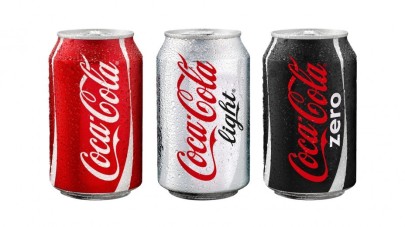The following are three examples of Visual Consistency in practice.

Coca-Cola Products, 1886 – present
The Coca-Cola Logo is a good example of Internal Visual Consistency. The logo was created in 1886, however this visual consistency of the brand has been near-continuous for the last 100 plus years. As an example of internal visual consistency, the intentional branding of their products has allowed for consumers to develop an emotional bond to the product. While the 3 cans show might vary in colour schemes and form product inside the can, they all share the same font type, and because of the proliferation of the brand internationally, people now almost instinctively associate quality due to the visually consistent look across the brand. They have intern developed a cultural identity that people emotionally attach with, all because they have created a consistent visual through-line thought their products. (Lidwell, Holden, & Butler, 2003).
Breville Toasters, 2016
Toaster designs like the ones presented here, are a good example of External visual consistency in practice. Both come from the same brand, Breville, but from a structural level visually similar. This is because the perfect toaster design has been defined, and is now an industry standard. For competing brands to make something radically different, (whether is actually a better product) would be a risk finical venture because people, by this point are conditioned to know how toaster works, and anything drastically different would alienate users. These toasters would not be difficult to operate as, based on past experiences, users insert the bread and adjust the dial, then push the button down to toast. By creating visually similar designs across all their products and creating virtually identical functional features, the brand has created aesthetic and functional consistency(Neillbarry, 2013).
Google, 2016; Duck Duck Go, 2016
An example of both Internal, external and functional consistency is the almost informal design of internet search engines. Google set the standard (and defined there brand style) for how search engines where designed. The big lesson they imparted upon others is with a online search engine: minimalism is key. There should be a balance between functional design and internal design, with the layout clear, unencumbered my excess graphics and links to core functions of the service available from the get go. DuckDuckGo looks similar to google because they don’t want to alienate users from the experience of using their site for the exact same function. They subscribe to external consistency factors in order to be successful, and much like the toasters, are visual and structurally limited due to defined product normalities. This example also shows that Internal, External and Functional Consistency co-exist effectively, and often the line can blur between them (Schneider, Jung, & McMahon, 2012).
Images/Academic sources
Breville (September 26, 2014). Breville Toaster CT45B (image). Retrieved from https://svigors.wordpress.com/2014/09/26/question-2-examples-of-aesthetic-and-functional-consistency/
Breville (September 26, 2014). Breville VTT375 Polished Stainless Steel 2-Slice Toaster (image). Retrieved from https://svigors.wordpress.com/2014/09/26/question-2-examples-of-aesthetic-and-functional-consistency/
Coca-Cola (2013) Coca-Cola products (image). Retrieved from http://www.doctordisruption.com/design/principles-of-design-52-consistency/
Lumsden, A. (2012) What We Can Learn from Google’s New UI. retrieved from https://cdn.tutsplus.com/webdesign/uploads/legacy/articles/056_google_ui/images/new-google-homepage-ui.png
Dr Distributor (2013) Principles of design #52 – Consistency. Retrieved from http://www.doctordisruption.com/design/principles-of-design-52-consistency/
Lidwell, W., Holden, K., & Butler, J. (2003). Aesthetic‐Usability Effect. In Universal Principles of Design (pp. 46). Massachusetts: Rockport.
Neillbarry (2013) What is Aesthetic, Functional, Internal, External: Consistency? (blog post) retrieved from https://neillbarry.wordpress.com/2012/05/21/aesthetic-consistency-functional-consistency-internal-consistency-external-consistency/
Schneider, G. P., Jung, J., & McMahon, M. (2012). CCA1108/4208 communications and digital technology. South Melbourne: Cengage Learning.




